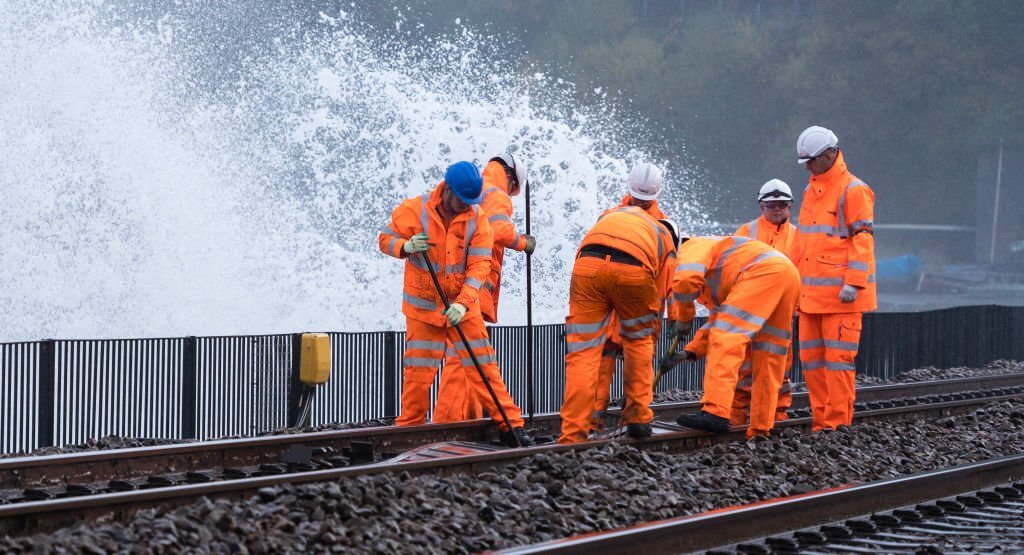
Introduction :
Railway maintenance equipment is essential for ensuring the safety, reliability, and efficiency of rail networks. However, like any industrial operation, the use of such equipment can have environmental consequences. This article delves into the environmental impacts of railway maintenance equipment. By examining factors such as emissions, noise pollution, energy consumption, and the adoption of sustainability practices, we gain insights into the ecological footprint of rail maintenance operations.
Emissions and Air Quality:
Emissions from railway maintenance equipment contribute to air pollution, affecting both local and regional air quality. Diesel-powered equipment, such as locomotives and construction machinery, emits particulate matter (PM), nitrogen oxides (NOx), and carbon dioxide (CO2). These emissions can have adverse effects on human health and contribute to smog formation. The industry is exploring alternatives, such as electrification and hybrid technologies, to reduce emissions and mitigate their impact on air quality.
Noise Pollution and Community Impact :
Railway maintenance equipment often generates significant noise pollution, impacting both nearby communities and the natural environment. High levels of noise from equipment like track tamping machines, welding operations, and ballast regulators can disrupt local ecosystems and disturb residents. Noise barriers, improved equipment design, and scheduling maintenance during non-peak hours are strategies to minimize the noise impact and foster better community relations.
Energy Consumption and Efficiency:
The energy consumption of railway maintenance equipment directly influences the carbon footprint of rail operations. Traditional equipment reliant on fossil fuels consumes substantial amounts of energy, contributing to greenhouse gas emissions. However, the industry is progressively embracing energy-efficient practices and technologies. Electrification of rail operations, use of regenerative braking systems, and adoption of hybrid propulsion systems are steps toward reducing energy consumption and promoting sustainability.
Sustainability Practices and Mitigation Strategies:
Railway maintenance operations can adopt various sustainability practices to mitigate environmental impacts. These include implementing emission control technologies, utilizing low-emission fuels, and optimizing maintenance schedules to minimize energy consumption. Additionally, proper waste management, recycling of materials, and reusing resources from decommissioned equipment can significantly reduce the ecological footprint of rail maintenance activities.
Natural Habitat and Ecosystem Disruption :
The installation and use of railway maintenance equipment can disrupt local ecosystems and natural habitats. Construction activities may result in habitat destruction, soil compaction, and alteration of watercourses. To mitigate these impacts, proper environmental impact assessments and mitigation plans are crucial. Implementing measures to preserve and restore affected areas can help balance maintenance needs with ecological sustainability.
Innovations for Environmental Sustainability:
The rail industry is embracing innovation to minimize the environmental impacts of maintenance equipment. Advancements in engine technology, emission reduction technologies, noise mitigation measures, and alternative energy sources are leading to more sustainable practices. Electric-powered maintenance equipment, quieter machinery, and precision maintenance techniques all contribute to reducing the ecological footprint of rail operations.
Collaboration and Regulation :
Government regulations and industry standards play a vital role in addressing the environmental impacts of railway maintenance equipment. Stringent emission regulations, noise control standards, and sustainability targets incentivize the industry to adopt cleaner technologies and practices. Collaborative efforts between rail operators, equipment manufacturers, and regulatory bodies are essential to drive positive environmental change.
Balancing Operational Needs and Environmental Responsibility :
The challenge lies in striking a balance between the operational requirements of maintaining a safe and efficient rail network and the responsibility to minimize environmental impacts. As rail networks continue to expand and evolve, the industry faces the task of implementing environmentally conscious practices without compromising on service quality.
Conclusion :
The environmental impacts of railway maintenance equipment are a multifaceted concern that encompasses emissions, noise pollution, energy consumption, and ecosystem disruption. As the rail industry grows and embraces modernization, it must address these challenges by adopting sustainable practices, investing in cleaner technologies, and collaborating with stakeholders to ensure that rail maintenance operations align with environmental responsibility. Balancing the needs of rail networks with the well-being of communities and ecosystems is essential for a more sustainable and harmonious future.



